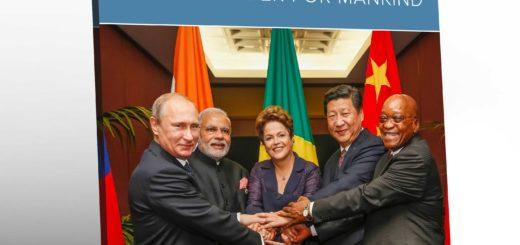Another Reason a Non-Dollar Reserve, Credit System Is Urgent
Dec. 11 (EIRNS)—Some 90% of the debt of developing countries (often degraded with the term “emerging markets” or just “EMs”) is denominated in dollars and euros—overwhelmingly in dollars. The U.S. dollar is overvalued due to 20 years’ lack of real, and 12 years’ lack even of nominal productivity growth. U.S. technological productivity growth has been below 1%/year on average in this century, and even simple labor productivity growth has averaged only 1-2%/year since the 2008 financial crash. This is a far cry from productivity growth during this century in, not only China, but also India, for example.
An article in the Indian Express Nov. 20 pointed out that in that period—between 2011 and 2019—the public debt of developing countries rose on average by 18% of their GDP.
In 2021 global debt grew by an astonishing one-third, from $226 trillion to $303 trillion, and that growth has not slowed in 2022; developing countries’ total debt has surpassed $100 trillion of that. The dollar became still more overvalued during 2021 and 2022 as the Federal Reserve flooded the world with new dollars and then led the major central banks (other than the People’s Bank of China) in repeatedly raising interest rates associated with the dollar.
With it has come increasing poverty. Average real incomes have declined in most of the world in 2022 according to the International Labor Organization report of Nov. 30, and global extreme poverty, defined now as income of $2.15/day or less, grew for the first time in decades, likely by as many as 100 million people.
Seeing these developments the World Bank and the IMF itself are making panicked warnings that a wave of “disorderly defaults” is coming throughout the developing sector; there is loud worrying in the international and major national media such as the New York Times on Dec. 3 (“Defaults Loom as Poor Countries Face an Economic Storm”). The IMF holds 60% of “poor countries” to be in debt distress, and the World Bank expects 12-15 of them to default in 2023.
This should not and need not be. Again, overwhelmingly this debt is owed in a greatly overvalued currency. A new international monetary agreement which was actually a credit system, with stable and relatively fixed exchange rates and joint capitalization of multilateral credit institutions, would be achieved only by recognizing the decades’ lack of American productivity growth and devaluing the dollar, relative to gold reserves and to currencies like the Chinese renminbi and Indian rupee.
Meanwhile the most-affected developing nations will have to reorganize their foreign debt according to the Hamiltonian principles spelled out by Lyndon LaRouche in his Operation Juárez in 1982.
Helga Zepp-LaRouche said in her webcast interview with Harley Schlanger on Dec. 9:
“It is very clear that there is a new strategic alignment going on. This involves the whole BRICS dynamic, because there are now many countries that want to join the BRICS-Plus, that is Argentina, Saudi Arabia, Egypt, Algeria, Turkey, Iran; and Russian Foreign Minister Lavrov said that there are altogether 17 countries that have lined up and applied for full membership in the BRICS. Now, already now, the BRICS has a GDP which is larger than the G7, and if you add all of these countries, it is very clear that the power center of the world economy, which already has shifted to Asia, will be amplified a lot in the direction of the countries of the BRICS-Plus, plus the countries that work with this organization which is very quickly growing.”
In the same discussion she located, in her Ten Principles for the formation of a new strategic and economic architecture, “the idea of overcoming poverty as the most important task, because if there are 2 billion people threatened with starvation, that is right now the most urgent task.”
These developing nations must have such a new monetary and credit system soon to prevent destruction of their economies by their U.S. dollar-denominated debt. And the United States and other “developed” countries need it urgently before the time, not far in the future, when even the Federal Reserve can’t print enough of those dollars to keep the biggest banks from becoming illiquid and collapsing.













